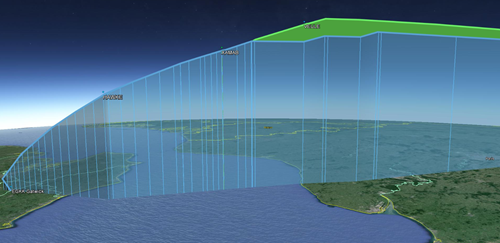DSNA improves continuous climb operations for London area Southbound flights

Paris ACC and Brest ACC implement a new high altitude sectorisation over the Paris area in close cooperation with London ACC.
This new airspace design aims to optimize London area climbing profiles, by reducing the number of intermediate level-offs towards the cruising level. It cuts down the number of radio frequency transfers between controllers and pilots by providing a seamless interface and improved ATC procedures.
Continuous climb operations up to FL290 deliver enhanced vertical flight efficiency. Since April, DSNA has controlled an average of 260 commercial aircraft following these new profiles each day, resulting in an average fuel load reduction of 3 tonnes per day. Significant benefits are also available through improved intra-European city-pairs connections like ‘London-Zurich’, ‘London-Lyon’ and ‘London-Basel’.
Maurice Georges, Chief Executive Officer of DSNA, the French Air Navigation Service Provider, said : ‘I would like to congratulate all those contributed to the successful achievements of this cross-border project. It illustrates DSNA strategy to build a European sky where each customer can perform « le vol parfait »’. (The Perfect Flight)
Juliet Kennedy, Operations Director at NATS Swanwick Centre, said : ‘This is another example of what we can achieve by working closely with our European partners, delivering real fuel efficiencies for our airline customers while at the same time cutting controller workload.’
London > Lyon and the new vertical profile (in green) : airlines can plan up to FL 290) and reach their cruise flight earlier. An A320 can save up to 60 kg of fuel.




.png)



.jpg)
Comments
There are no comments yet for this item
Join the discussion